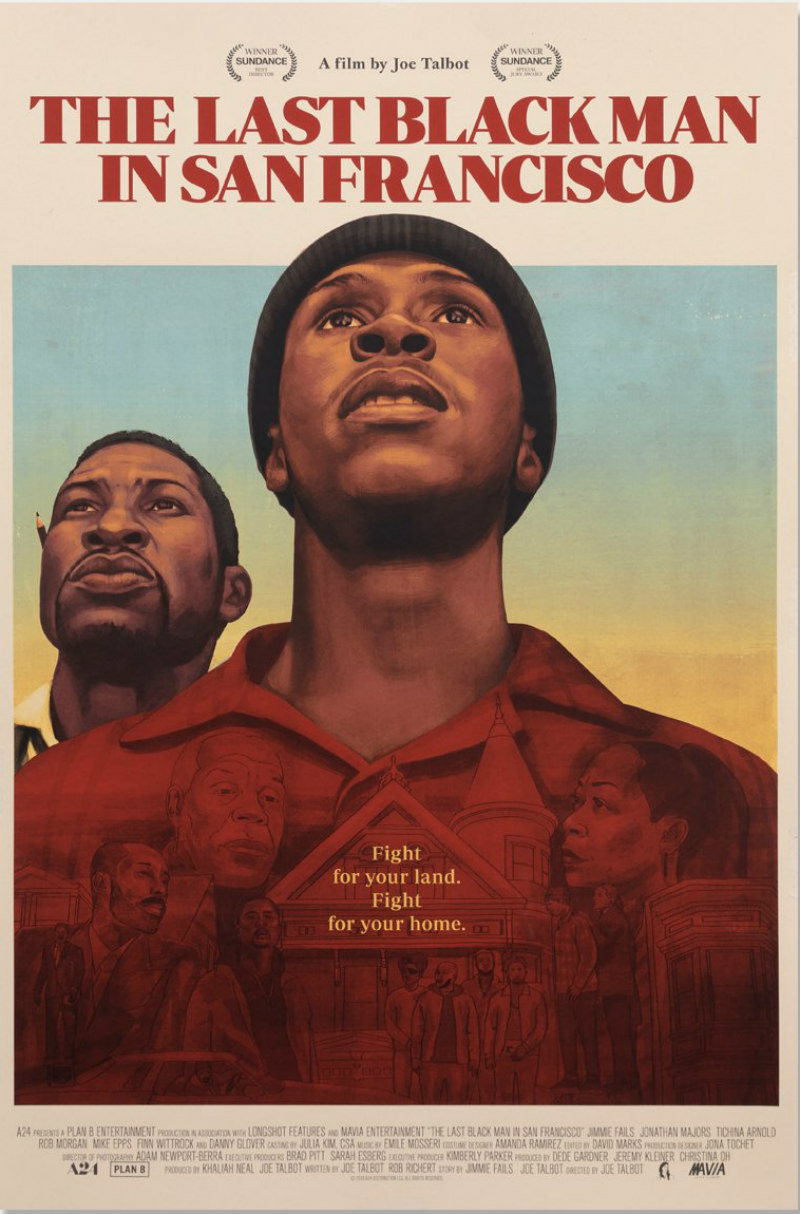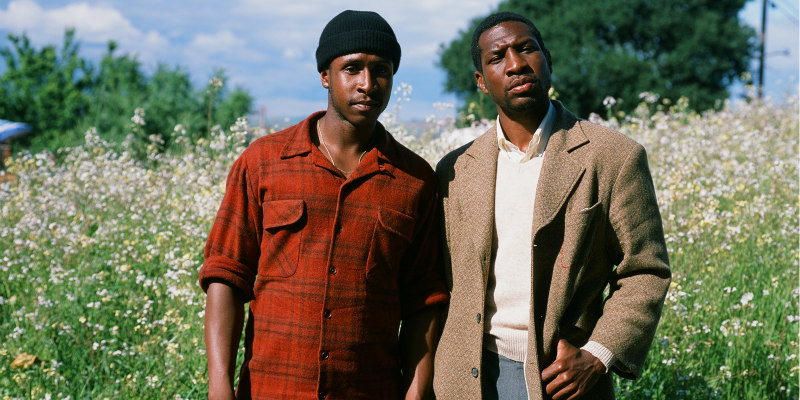
Review by
Benjamin Poole
Directed by: Joe Talbot
Starring: Jimmie Fails, Jonathan Majors, Danny
Glover, Tichina Arnold, Rob Morgan, Mike Epps, Finn Wittrock,
Thora Birch

Is San Francisco the world’s most cinematic city? The vivid iconography of
the City by the Bay has contributed to the quintessential crime cinema of
Bullitt, The Maltese Falcon and the Dirty Harry series
(where mad old Republican Clint could get all squinty about the city’s
liberal attitude and diverse clientele). Hitchcock set The Best Film Ever
Made there, with the severe drops, towering buildings and famous bridge of
the city providing a dizzying visual context for Vertigo (a
milieu that was replicated by Vertigo’s pop-cover, the peerless Basic Instinct, years later; a film which, of course, mined the city’s heightened
sexuality for cheeky thrills).

As well as being a ready made backlot, San Francisco is also, according to Wikipedia, "the highest rated American city on world liveability rankings, as of 2019." So, it’s no wonder that, in Joe Talbot’s immensely likeable The Last Black Man in San Francisco, lead characters Jimmie (Jimmie Fails - he plays himself as the film is based upon actual events) and Montgomery (Jonathan Majors) are at pains to reclaim Jimmie’s childhood home, a Victorian house which was apparently built by his grandfather back in the day.
[ READ MORE: New Release Review - The Last Duel ]
The opening of The Last Black Man in San Francisco, with its overbearing music, cutesy tracking shots, and picaresque
background action, is disingenuously kitsch in comparison to the movie at
large. We see the two characters - middle aged black men - share a
skateboard as they zip through the city; they pass a little girl in
pigtails, the infallibly gorgeous scenario of the bay area, and then a
tweaking white fella who asks to be taken with them: he runs after the
skateboarding duo, and takes his clothes off as he does so!

It’s wacky, and the film sort of continues in that whimsical vein for most of its first act. I’ve never been able to take a grown man on a skateboard seriously, so it was hard to emphasise with Jimmie’s plight as he low-key tries to ingratiate himself with what he believes to be his family’s homestead. This involves covertly rocking up to the house and giving the exterior fixings a fresh lick of paint, much to the well-meaning chagrin of its present occupants (an elderly white couple, who display the unfortunate cultural stereotyping - stuffiness, needling voices - of that designation). But! The occupants eventually move on, and Jimmie and Montgomery get to full on squat in the house… for the time being.
[ READ MORE: New Release Review - Deadly Cuts ]
The Last Black Man in San Francisco certainly feels lived in
and legitimate. Aside from the real-life origins of the story, the
representation of the city has an authority which could only be communicated
by true denizens of the area, witnesses to that third dimension which only
becomes apparent to those who have lived and breathed a particular place for
some time.

This verisimilitude comes closer to the fore as The Last Black Man in San Francisco continues and the narrative proper kicks in. The brash hipster affectations melt away to reveal a deeply felt portrayal of identity and racial politics, which is unflinching in its conclusions. It turns out that perhaps Jimmie’s grandfather didn’t have as much to do with the construction of the house as his grandson has convinced himself he did. The supposed airs and graces that Jimmie holds dear are childishly resented by his community. And, underneath it all, is the threat of black on black violence, a series of plot points which contrast sharply with the quirkiness of the film’s opening. Talbot gradually builds emotion and drama, drawing from the richness of authentic urban experience. In The Last Black Man in San Francisco a unique setting is utilised to tell a unique story.

The Last Black Man in San Francisco is on Netflix UK/ROI now.
